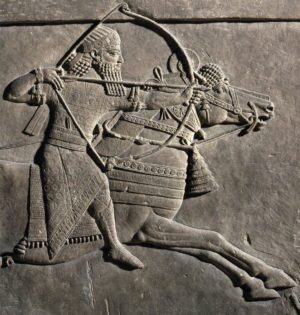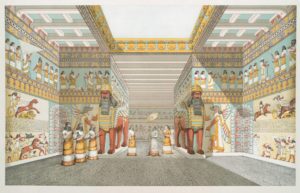
Science Advances—Changes in climate may have contributed to both the rise and collapse of the Neo-Assyrian Empire in northern Iraq, which was considered the most powerful empire of its time, according to a new study. The results suggest that multi-decade megadroughts aligned with the timing of the empire’s collapse in 609 BCE, triggering declines in the region’s agricultural productivity that led to political and economic demise within 60 years. Previous explanations for the empire’s collapse have focused on political instability and wars; the role of climate change was largely “ignored,” the authors say, in part because of a lack of high-resolution paleoclimate records from the region. Ashish Sinha et al. gathered oxygen and carbon isotopic data from two stalagmites found in Kuna Ba Cave in northern Iraq, which provide a precisely dated record of precipitation over the last 4,000 years. These records indicate that the interval between 850 and 740 BCE (when the empire was at its zenith) was one of the wettest periods in 4,000 years, with precipitation levels during the cool season 15 to 30% higher than during the modern 1980-2007 period. However, the record also suggests that cool season precipitation during a seventh century BCE megadrought may have fallen below the level required for productive farming. Since the empire was highly dependent on agriculture, Sinha and colleagues conclude the megadrought would have likely exacerbated political unrest and may have encouraged invading armies that ultimately led to Assyrian collapse. The authors also note that their data suggest that the recent multi-year droughts, if they were to continue over a century, would constitute the worst episodes of regional drought in the last four millennia.
_________________________

Ashurbanipal, last major ruler of the Assyrian Empire, depicted in the royal lion hunt bas-reliefs (c. 645 BCE) that were ripped from the walls fo the North Palace at Nineveh during the excavations of 1852-1855 and shipped to the British Museum. The bas-reliefs are widely regarded as “the supreme masterpieces of Assyrian art”. British Museum
_________________________

‘Hall in Assyrian Palace’ restored from 1845 excavations at Nimrud, in the Monuments of Nineveh, from drawings made on the Spot, 1849, by Austen Henry Layard. The earlier Assyrian capital at Nimrud, 30 kms south of the last capital at Nineveh, was similarly destroyed in 612 BCE. New York Public library digital collections
_________________________
Article Source: Science Advances news release. Science Advances is published by AAAS, the nonprofit science society.
If you liked this article, you may like End of Empire: The Archaeological Excavations at Ziyaret Tepe, about excavations that have revealed a massive ancient Assyrian provincial capital, including a unique and remarkable glimpse into the demise of the ancient empire.
_________________________
Advertisement



